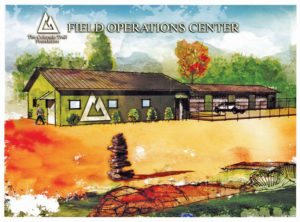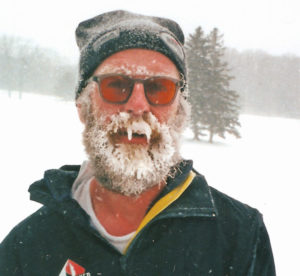By Tina Mitchell
“Weasel out! Close the doors! Nobody without a rabies vaccination touch it! Cover the baby possums!” Not an utterance you’d hear in just any volunteer setting. But as a volunteer at a wildlife rehabilitation center, I can vouch for the fact that it’s just another day on the job. I have been involved in wildlife rehabilitation, working with mammals and birds alike, for more than a decade. Lately, I’ve specialized in hand-raising orphaned baby birds – and as the avian breeding season winds down in September, I find myself wondering why we’ve been working so hard. Did the world really need those hundreds of young House Finches, House Sparrows, European Starlings, Rock Pigeons, Eurasian Collared-Doves, American Robins, Blue Jays that we released this summer? Probably not. What really happens to them after we send them back into appropriate habitats? No way to know. With fewer and fewer wildlife rehab centers still
operating – central Colorado citizens have to travel to Pueblo (Second Chance Wildlife) or Colorado Springs (Ellicott Wildlife) – should we really be doing this? These questions particularly resonate when considering baby birds. No human can teach a baby songbird to be its adult self better than even a vaguely competent parent. Learning to sing (males) or recognize (females) the appropriate songs is critical for mating – and those seeds are planted, research suggests, in the first 10-50 days of most songbirds’ lives. If they don’t hear their father’s songs, males produce lousy versions of their songs later in life; females may not respond appropriately when they hear the songs as adults. A baby songbird in wildlife rehab will spend those critical early days away from its natural habitat. For all but the most common yard birds, it will never hear a species-specific song and may not be able to secure a mate, unless the pickin’s were really slim one season. For most common species, natural selection works on its own just fine, in my opinion. In the wild, baby animals die all the time when we’re not watching. Disease, drought, abandonment – nature “rewards” the most competent and adaptive parents through their passing their genes on to a next generation which in turn survives to breed. We can’t – and shouldn’t – try to fix everything. Sometimes, anything. Again, that’s my opinion. But don’t get me wrong. Licensed wildlife rehab does play some key roles – the most important, protecting the well-meaning public from themselves. Many people care deeply about wildlife; when they find a creature in trouble, they just want to help. As one who has often talked with concerned citizens, I can confirm one of the hardest things to convince someone to do is walk away – even when you’re quite sure that, say, that young American Robin is just fine, its parents are around and the person is in effect proposing to “kidnap” a perfectly fine fledgling. If someone licensed and qualified won’t intervene, that person may decide to do something on his or her own, which rarely ends well for human or wildlife. Another point where rehab seems appropriate to me is after human-caused casualties. A homeowner trimmed a tree during breeding season and baby squirrels tumble out of a nest. A bird flies into a window. A nest built on a travel trailer gets towed to the mountains before the owners notice the babies. An outdoor cat caught a baby rabbit. On and on. In fact, a recent article showed that the most egregious anthropogenic causes of avian mortality include wind turbine collisions (killing hundreds of thousands of birds annually), building/automobile collisions (hundreds of millions dead), and outdoor cats (billions dead). When someone finds such a victim still alive, I think that we humans owe that critter a chance to continue on, if possible. But my work in wildlife rehab also has a selfish side to it, full of extraordinary interactions with wildlife in otherwise impossible circumstances. Feeding a group of young Western and Mountain Bluebirds in a flight cage, I found myself in the middle of a swirling, chattering cloud of blue. I released a healed Barn Swallow to join a crowd of zooming, zipping, bug-chasing fellow swallows as if she had never left. A Yellow-bellied Marmot licked my hand one Christmas Day. (I later realized I had canned pumpkin on my fingers, which it really liked. Even so, how many people can claim that as a Christmas present?) That’s really why I do it – a bit of public safety, a bit of karmic payback and a whole lot of joy.
After a quarter-century in Colorado, Tina and her family recently migrated to Southern California, where she’ll spend the next quarter-century trying to remember that the mountains lie to the east.


